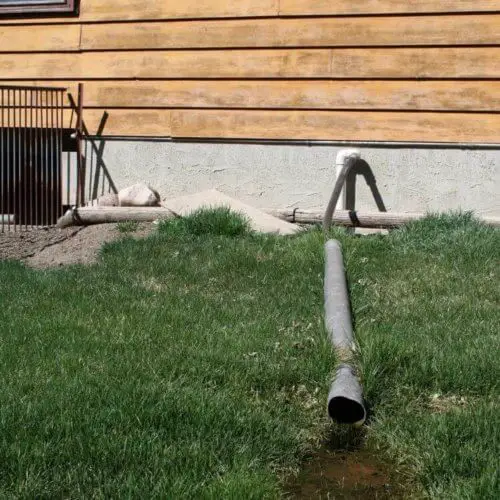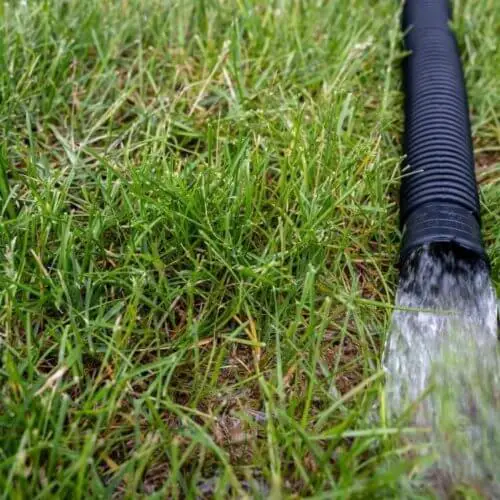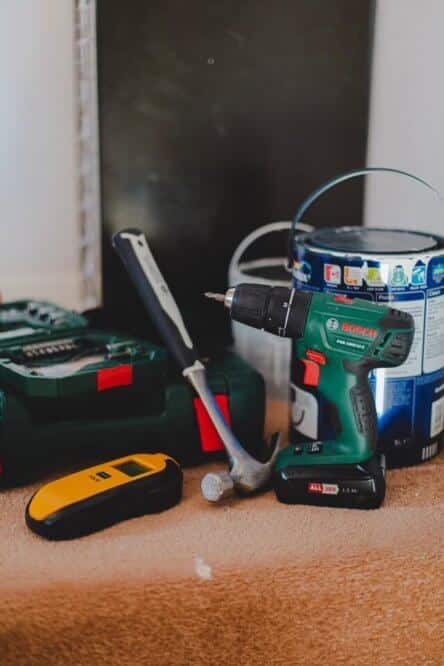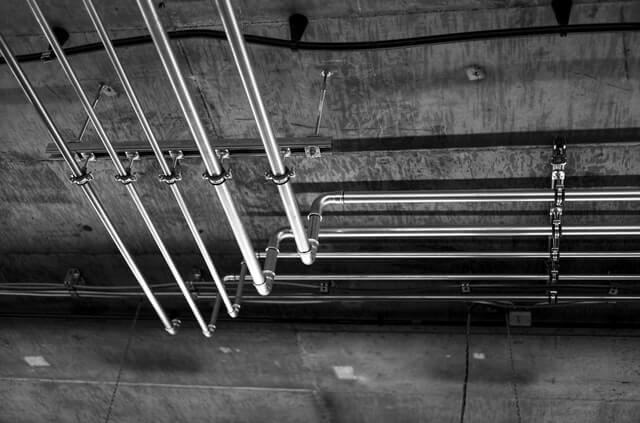When engaging in the enhancement of our home, there are many ideas that pass us by. With the subject of flooding and water damage in our homes, these ideas can be even easier to miss despite seeming so obvious. That’s why we are covering sump pump discharge ideas below.
What is a sump pump?

The systems and procedures used to cut down issues within our household are plentiful, and among them, the sump pump has a straightforward application. It is a pump that is used to remove water from our basement. The water accumulates in a sump pit and is then removed through the sump pump. [1]
- Sump basin
The sump basin, or sump pump discharge pit, is a pit that has been carved out below the main surface of the basement. This pit will act as a place where water will accumulate, absorbing all the water that would otherwise be splattered across the basement floor. The sump pump found then empties the basin, preventing water from accumulating too much. [2]
- Importance of sump pump
Sump pumps are made to prevent flooding and moisture. Unfortunately, these two issues can quickly deteriorate the quality of the basement. However, the problems caused aren’t the only point of concern.
Lack of a good sump pump can also lead to the basement being rendered basically useless. At that point, the basement cannot be used as storage, workshop, or anything else, which hampers the overall utility we could be getting out of it.
How does a sump pump turn on?
A sump pump will activate automatically to prevent potential flooding. The water will be pumped out through its system, allowing more moisture to accumulate within the basin. It’s a relatively simple yet sophisticated system that automatically detects changes in water levels and pressure, acting accordingly with the changes.
The quality of these sump pumps dictates the safety of our basement. The better and more functional it is, the less likely we will end up with flooded basements and water damage within our household.
Sump pump discharge ideas

The discharge generated by the sump pump has to go somewhere. There are great ways of channeling it down to your corresponding drains, but this can be suboptimal at times. So, either due to its effect on our surroundings or the quality of actual elimination of the water from our basement, we end up seeking different ideas of discharging our sump pump.
- Add French drain to your plumbing
The sump pump needs a proper drain to take all the water and transfer it outdoors. In addition, the discharge line needs to be formed in a way where it will bring water out of the basement and outside where it can be dispersed without the risk of it returning back into the house.
An alternate draining system to sump pump called French drain can be installed in these situations. A French drain is a trench filled with gravel or rock with a perforated pipe that redirects surface and underground water away from your household.
French drain leads the water away from our household, ensuring it doesn’t pool back near our home. It is a more passive system than sump pump but can work well in cohesion with it if you are having extreme influx of water.
French drains are an excellent way of mitigating water damage that could affect our foundation, so its utility shouldn’t be underestimated. When used with your sump pump, you get twice as much potent water disposal. Although other solutions can be employed alongside the French drain, it’s definitely a potent one to consider as long as it’s installed properly.
- Scatter drainage about with gardening
One of the most dangerous situations for a sump pump and your basement, in general, is heavy rain. When rain truly starts pouring, it can overwhelm the established sump basin. The speed of our sump pump may not be fast enough to remove all the water.
In these situations, we need something to slow the downpour from reaching our basin and overwhelm the defenses against flooding that we have installed. Among the solutions available, planting different plants around the yard may be the most straightforward way to get the flooding under control.
The plants we put in our garden are capable of absorbing the excess water that’d otherwise be devastating for us to deal with. Plants that are quick to suck in water are probably the best source of reliable water absorption we can get. The soil plants are planted in slows down the progress of rainwater as well. Keep that in mind when engaging in gardening. Pick soil that absorbs water well.
Adding rocks or stones into the mix will further slow the water’s flow through the soil and enhance the growth of plants. The bigger the plants grow, the more potent their ability to absorb excess water, so these preparations will pay off.
- Dry well
The next step towards mitigating problems we may face with sump pump discharge is making a dry well. A dry well’s key purpose is to funnel water underground and disperse it, so it doesn’t cause issues such as potholes. You can think of it in a similar way to a French drain, except this one relies on a different system. Rather than being an entire pipe system, it is primarily a barrel that will hold water before dispersing it.
A dry well needs to be located in a sloped area, with the slope going down from your sump pump. This is done to allow water to run off quickly into the dry well itself and prevent it from flowing back into the sump pump. Additionally, the well needs to be located about a dozen feet away from the house. With a dry well, the water won’t end up flowing back into our basement. It does require some intensive work to get it installed. [3]
How to hide sump pump discharge pipe

The sump pump and its discharge can be troublesome to manage from the perspective of functionality but from one of appearance too. At times, these two can really dampen the look of our entire backyard and even the look of our basement. This goes double if you are somebody who uses your basement more actively. So here are some bits of advice on hiding the sump pump discharge pipe.
- Obscure it with objects from your basement
If the basement is something you are actively using, it’s a given that it’ll either be furnished or stacked with various objects we don’t have a place for in our home. Furnishing your basement can pull double duty. By pulling pieces of furniture over the sump pump, the whole installation can be hidden.
This can be done with just about any object, but larger ones usually work the best. If you are employing furniture, make sure whatever legs it has aren’t located directly on top of the sump pump. Otherwise, the sump pump may get damaged when pressure is applied to the furniture. Any of such damages can result in issues with the pipe. [4]
- Use a sump pump cover
It’s a given that very few people will leave the sump pump discharge pipes exposed. There are fewer chances of accidentally damaging them or having them get damaged from outside factors with proper covers.
A sump pump discharge pipe cover may come with the item itself, usually being decorative in nature and allowing you to quickly hide it. On the other hand, it’s possible to make one. Some DIY skills are necessary, but the cover you create can be easily adjusted to better fit the surroundings of the sump pump.
- Plants can help obscure it
Once again, we may use plants when dealing with sump pump discharge pipe to mitigate some of its less desirable effects. In this case, potted plants can be used to obscure the actual sump pump discharge line and leave us with a much fresher-looking room. The bushier plants could obscure it to a point where the installation won’t even stick out.
We advise caution when putting plants around the sump pump. Similarly to furniture, the plants could damage the pipe if they were ever in direct contact. So make sure the plants you put up won’t accidentally fall over onto the pipes, and pay caution when watering them not to bump them into it.
There are many other options for obscuring the sump pump discharge pipe, but these are probably the most applicable. Simple and fast, these methods of concealing the pipe are guaranteed to result in a prettier basement.
Sump pump discharge pipe installation
The above concerns won’t amount to much if the initial installation of the system isn’t correctly done. The sump pump drainage pipe needs additional care to operate at the highest possible capacity. If we don’t do a proper job with it, there is a chance the sump pump discharge pipe won’t be able to operate as intended and may even malfunction. Here are the steps you should take when installing. [5]
- Attach PVC pipe to a sump pump
The first thing we should do is attach a PVC pipe to the sump pump’s discharge side. A male adapter needs to be glued onto the PVC pipe and slotted into the female adapter of the sump pump. This achieves a proper connection between the two.
The PVC pipe we connected to the sump pump will be referred to as a discharge pipe from now on. This is because it technically already fulfills that role at this point with the obvious lack of proper disposal.
- Drill a weep hole and install a valve into it
Weep holes are used to alleviate all the potential flow of water into our household. In this case, we will be drilling a small hole six inches above the sump pump discharge to serve as one for the drainpipe system. However, we will install a vertical check valve above the weep hole in this situation. To do so, you’ll need to use a saw or a similar tool to cut the pipe and get the valve in.This valve will act as a way of preventing water from draining back into the pump.
- Make an outside exit for the pipe
Now is the time to make sure the pipe can exit from the household and into the yard. You’ll need to drill another hole here. The hole’s location should first be marked with a smaller drill size and then drilled from the outside with an appropriate drill size.
Drilling from the outside is done to avoid potential damage we could invoke on the structure. It’s also important to note that sometimes walls will be too thick or material too robust to use a standard drill. You should get a more potent means of drilling holes in the walls in these situations.
- Forward the pipe
This step will allow you to extend the discharge pipe outside. By adding PVC pipes and fitting them to the discharge pipe, you can form a proper pipe that will carry the sump pump discharge outside.
Ensure to properly fit the PVC pipes and reinforce the connections with PVC cement. When the pipe gets to the hole leading to the outside, lead it a few inches through the opening before sealing the opening here with silicone caulk. This is done in order to further protect the pipe from outside influences of either water or wind.
- Lead the pipe to the outlet
Once the discharge pipe is outside, it’s time to dig a trench. It will accommodate the pipes and lead the discharge into a proper outlet. As with most sewer installations, we should ensure that the trench is slightly sloped for water to flow correctly.
It’s fruitful to utilize a PVC increaser at the end of the discharge pipe. It will lower the risk of your discharge pipe having problems disposing of its contents at the outlet and better spread the flow.
- Finishing touches
Connect the pipes to the outlet and make sure to refill the trench. Be careful not to damage any of the components while doing so. After finishing this task, you should be set with your discharge pipe.
Where to run sump pump discharge?

The last question one may have is where to run the sump pump discharge exactly. As we’ve noted, outlets and other installations that aim to eliminate various waste are prime locations to get rid of the sump pump discharge. However, here are some other ideas for getting rid of sump pump discharge.
Sump pump discharge ideas
The key thing to consider with your drainage pipes is never to put them too close to your household. The proximity to the home could nullify their benefits and potentially cause issues. The side effects include just about anything from water damage to flooding. [6]
The ideas for depositing this discharge that we can offer lay specifically in those additional sources of disposal.
You could use the dry well to reduce rainwater’s flooding through a secondary sump pump deposit. We’ve mentioned dry well above, so we recommend you refer to that section too.
Another thing one could do is create a side pipe on the drainage pipe, which would divert some of the water into a separate area. This can be an outlet, another tank, or whatever type of drainage depositing area.
Lastly, you could potentially utilize the drainage from your sump to water the lawn. The water can be forwarded to the lawn or any other section, taking care of your plants and helping with discharge. However, keep in mind that the sump pump pressure isn’t too strong and won’t be able to run sprinkler systems. The best way to utilize it is by directly spilling water into the soil.
Conclusion
The sump pump is a rather simple piece within our household that keeps our basement safe from flooding and seepage. Any dampness that would otherwise find its way below our house will accumulate within the sump basin and be extracted outside.
However, as showcased above, there are a number of concerns to deal with and some improvements that can be made. The quality of the sump pump and its operation can be enhanced by adding special extensions to the whole system.
The activities we do around this item will further reduce the chance of flooding and make our home just that much better. On top of that, sump pump discharge ideas can include enhancement of the overall yard either through decorative means or helping moisten the soil of our plants.

Michael Davis is a heating & plumbing expert who currently works as independent contractor in SC. He also writes for Plumbertip.
For almost 10 years he worked on various plumbing tasks across South Carolina.


